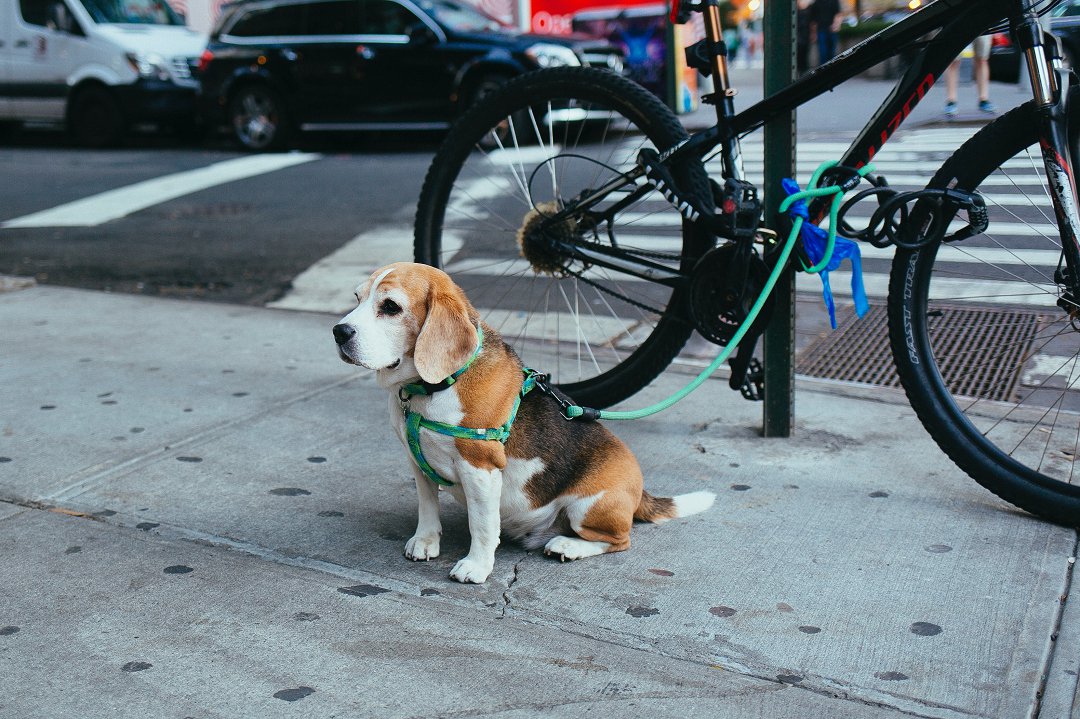Table of Contents
- 1 Introduction: The Importance of Post-Operative Care for Beagles
- 2 Essential Guidelines for Beagle Recovery after Surgery
- 3 Best Practices for Taking Care of Your Beagle’s Health Post-Surgery
- 4 FAQs About: How to Take Care of a Beagle After Surgery
- 4.1 What are some common complications to watch out for after beagle surgery?
- 4.2 How should I care for my beagle’s surgical wound?
- 4.3 How can I manage my beagle’s pain after surgery?
- 4.4 Are there any activity restrictions for my beagle after surgery?
- 4.5 What should I feed my beagle after surgery?
- 4.6 When should I schedule a follow-up appointment after my beagle’s surgery?
Introduction: The Importance of Post-Operative Care for Beagles
Are you a proud beagle owner who is concerned about your furry friend’s well-being after surgery? If so, you’ve come to the right place. In this article, we will explore the essential guidelines for taking care of your beagle’s health post-surgery. Specifically, we will focus on how to take care of a beagle after surgery and provide you with valuable insights to ensure a smooth recovery for your beloved pet.
When it comes to post-operative care for beagles, it is crucial to understand that this period is just as important as the surgery itself. Your beagle will require extra attention, care, and support during this time to heal properly and avoid any complications. From managing pain and monitoring the incision site to following a specific diet and adhering to activity restrictions, there are several key aspects to consider. By providing the right post-surgery care, you can help your beagle recover faster and ensure their overall well-being.
In the following sections, we will delve deeper into the essential guidelines for beagle recovery after surgery. We will discuss the best practices for taking care of your beagle’s health post-surgery, including wound care, pain management, activity restrictions, medication, diet, follow-up appointments, and rehabilitation. By following these guidelines, you can provide the optimal care your beagle needs during their recovery journey. So, let’s dive in and explore how you can support your furry friend’s healing process after surgery.
Essential Guidelines for Beagle Recovery after Surgery
After your beagle undergoes surgery, it is crucial to provide them with proper post-operative care to ensure a smooth and speedy recovery. Here are some essential guidelines to follow:
1. Monitor the Incision Carefully
- Check the incision site daily for any signs of infection, such as redness, swelling, or discharge.
- Keep the incision clean and dry, following your veterinarian’s instructions for wound care.
- Prevent your beagle from licking or biting the incision by using an Elizabethan collar or a surgical suit.
2. Manage Pain Effectively
- Ensure that your beagle receives the prescribed pain medication to alleviate any discomfort they may be experiencing.
- Observe their behavior for signs of pain, such as restlessness, panting, or decreased appetite, and consult your veterinarian if necessary.
- Consider using alternative pain management methods, such as cold compresses or laser therapy, under veterinary guidance.
3. Follow Activity Restrictions
- Restrict your beagle’s physical activity as advised by your veterinarian. This may include limiting exercise, jumping, or strenuous play for a certain period.
- Provide a calm and quiet environment for your beagle to rest and recover, minimizing the risk of injury or complications.
4. Administer Medication and Follow Dietary Guidelines
- Administer any prescribed medications promptly and as directed by your veterinarian.
- Follow any dietary restrictions or recommendations provided by your veterinarian to support your beagle’s healing process.
- Ensure your beagle has access to fresh water at all times to stay hydrated.
5. Attend Follow-up Appointments
- Schedule and attend all necessary follow-up appointments with your veterinarian to monitor your beagle’s progress and address any concerns or complications promptly.
- Keep a record of any changes in your beagle’s behavior, appetite, or overall well-being to discuss with your veterinarian during these appointments.
By following these essential guidelines for beagle recovery after surgery, you can help ensure a successful and uneventful healing process. Remember to provide a clean and comfortable environment for your beagle and seek professional guidance whenever necessary.
Next, we will explore the best practices for taking care of your beagle’s health post-surgery, including rehabilitation and monitoring techniques to aid in their recovery process.
Best Practices for Taking Care of Your Beagle’s Health Post-Surgery
After your beagle undergoes surgery, it is crucial to provide proper post-operative care to ensure a smooth recovery. Here are some best practices to follow:
1. Monitor the Incision Carefully
- Inspect the surgical incision daily for any signs of infection, such as redness, swelling, discharge, or foul odor.
- Keep the incision clean and dry to promote healing. Avoid allowing your beagle to lick or scratch the area, as this can lead to complications.
2. Administer Medication as Prescribed
- Follow your veterinarian’s instructions regarding medication dosage and frequency.
- Ensure that your beagle completes the full course of prescribed medication, even if they appear to be feeling better.
- If you notice any adverse reactions to the medication, contact your vet immediately.
3. Provide Proper Pain Management
- Beagles may experience pain after surgery, so it is essential to manage their discomfort.
- Your vet may prescribe pain medication or recommend over-the-counter options suitable for beagles.
- Observe your beagle for signs of pain, such as restlessness, whimpering, or reluctance to move, and consult your vet if necessary.
4. Follow Activity Restrictions
- Restrict your beagle’s physical activity as advised by your veterinarian.
- Avoid activities that could strain the surgical site, such as running, jumping, or rough play.
- Gradually reintroduce exercise as your beagle’s recovery progresses, following your vet’s guidance.
5. Maintain a Balanced Diet
- Proper nutrition is crucial for your beagle’s recovery.
- Follow your vet’s recommendations regarding post-surgery diet, considering factors such as age, weight, and the type of surgery performed.
- Ensure your beagle has access to fresh water at all times.
6. Attend Follow-up Appointments
- Regular follow-up appointments with your veterinarian are essential to monitor your beagle’s progress.
- These appointments allow your vet to assess the incision, address any concerns, and adjust the treatment plan if needed.
- Be prepared to discuss your beagle’s behavior, appetite, and any changes you have noticed since the surgery.
7. Watch for Complications
- Keep an eye out for signs of complications, such as excessive swelling, bleeding, or discharge from the incision, fever, or loss of appetite.
- If you notice any concerning symptoms, contact your vet promptly.
By following these best practices for post-operative care, you can ensure your beagle’s health and well-being during the recovery period. Remember to consult your veterinarian for personalized advice and guidance based on your beagle’s specific needs.
FAQs About: How to Take Care of a Beagle After Surgery
What are some common complications to watch out for after beagle surgery?
Some common complications to watch out for after beagle surgery include infection at the incision site, excessive swelling or bleeding, difficulty breathing, and signs of pain or discomfort. It is important to monitor your beagle closely and contact your veterinarian if you notice any of these complications.
How should I care for my beagle’s surgical wound?
To care for your beagle’s surgical wound, keep the area clean and dry. Follow your veterinarian’s instructions on wound care, which may include cleaning the wound with a mild antiseptic solution and applying any prescribed ointments or dressings. Avoid letting your beagle lick or scratch the wound, as this can lead to infection or reopening of the incision.
How can I manage my beagle’s pain after surgery?
Your veterinarian may prescribe pain medication for your beagle to manage post-surgery pain. Follow their instructions carefully and administer the medication as directed. Additionally, providing a comfortable and quiet recovery space for your beagle, with soft bedding and limited activity, can help alleviate pain and promote healing.
Are there any activity restrictions for my beagle after surgery?
Yes, there are typically activity restrictions for your beagle after surgery. Your veterinarian will provide specific guidelines based on the type of surgery performed. Generally, it is important to limit your beagle’s physical activity, such as running, jumping, or playing, to prevent strain on the surgical site. Leash walks for short periods may be allowed, but consult your veterinarian for guidance.
What should I feed my beagle after surgery?
Your veterinarian will provide specific dietary recommendations for your beagle’s post-surgery recovery. In some cases, they may suggest a bland diet or easily digestible food to avoid gastrointestinal upset. Ensure your beagle has access to fresh water at all times, but monitor their food intake and follow your veterinarian’s instructions regarding feeding amounts and frequency.
When should I schedule a follow-up appointment after my beagle’s surgery?
It is important to schedule a follow-up appointment with your veterinarian as instructed. This appointment allows the veterinarian to assess your beagle’s healing progress, remove any sutures or staples if necessary, and address any concerns or complications. Follow the recommended timeline for the follow-up appointment to ensure proper monitoring and care for your beagle’s recovery.






Leave a Reply